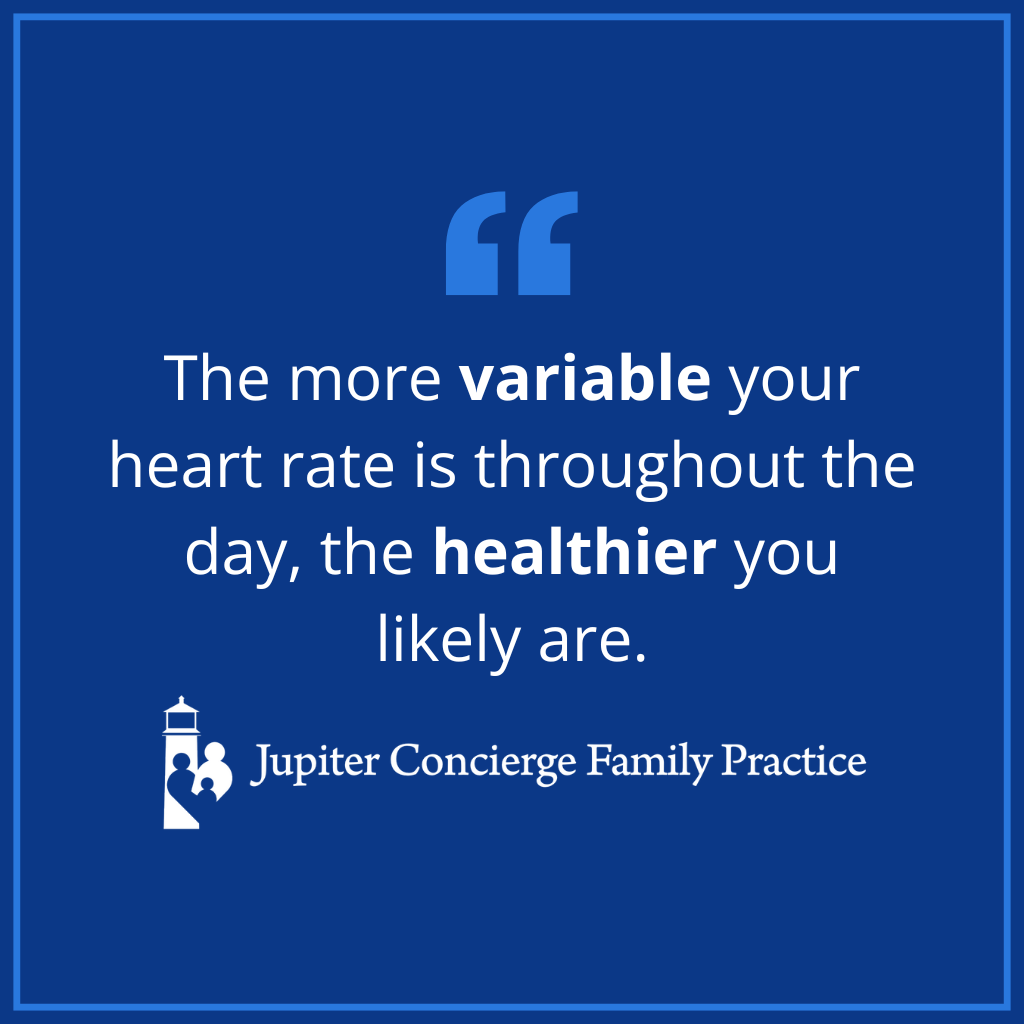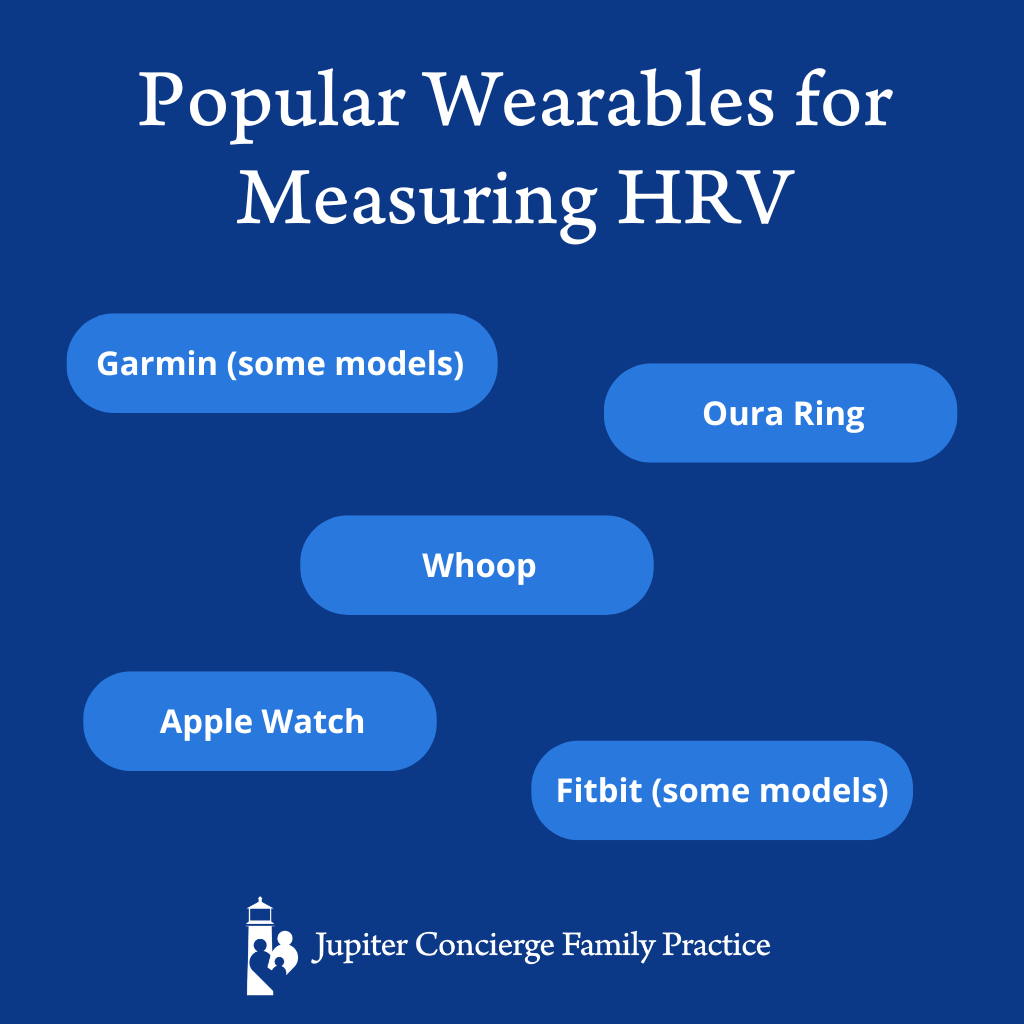
Many of us are interested in tracking our vital signs using the latest in smartphone, smartwatch, and even smart ring technology.
As such, you’re probably used to familiar measurements like heart rate, blood pressure, and oxygen saturation. But there’s another important yet less-known metric you may have noticed on your device’s dashboard: heart rate variability, or HRV.
What is heart rate variability? How does it differ from other vital signs? And what can it tell us about our health? Let’s take a closer look.
What Is Heart Rate Variability?
Heart rate variability is a measurement of how much the time between each of your heartbeats varies. That’s what heart rate variability is. But what does it mean?
HRV reflects the interplay between our sympathetic nervous system (our “fight or flight” system) and our parasympathetic nervous system (our “rest and digest” system) throughout the day.
Our bodies are dynamic; they don’t remain in one state all the time. Sometimes we need to process and assimilate a big plate of spaghetti, and sometimes we need to give a big presentation or run from an angry dog. Our brain switches us from parasympathetic to sympathetic and back as we encounter different needs.
The more variable your heart rate is throughout the day, the healthier you likely are. Low heart rate variability, where your heart rate stays fairly constant, is associated with poorer outcomes in disease processes, lifespan, and healthspan.
Essentially, a high HRV shows that your nervous system is dynamic, responsive, and capable. It can quickly ramp up when you need to be active and wind down when it’s time to relax.
Why Measure Heart Rate Variability?
Research suggests heart rate variability provides valuable health insights beyond what standard vital signs — like blood pressure and heart rate — can provide alone. For instance, low heart rate variability has been linked to an increased risk of cardiovascular events like heart attack and stroke.
By monitoring your heart rate variability, you get a window into how well your body is functioning. If you notice your HRV decreasing, you can make appropriate lifestyle changes to get back on track.
On the flip side, as you take steps to improve your health, watching your HRV trend upward over time supplies encouragement and motivation. In this way, heart rate variability serves as a powerful biomarker for your wellness journey.
How to Measure Heart Rate Variability
You’re likely used to getting vital signs like heart rate, blood pressure, temperature, and weight checked any time you go to the doctor. But you’ve probably also noticed they don’t measure heart rate variability.
Why? It isn’t because HRV is unimportant. Rather, heart rate variability is a measurement over time. Your physician simply can’t get a reading from a quick office snapshot like they can with other vitals. However, the rise of wearable devices that continuously monitor heart rate means you can now track your own HRV from anywhere.
To measure heart rate variability, you need a device that continuously detects your heartbeats. Many popular wearables now include HRV tracking:
These devices use optical sensors to measure the pulse at your wrist or finger. Then, algorithms analyze the tiny variations in the timing of your heartbeats.
Most wearables give you a daily HRV score or average, often measured during the night when you’re at rest. You can monitor this number over time and notice patterns. Are certain days of the week more stressful than others? How does travel impact your nervous system?
Some devices also allow you to take on-demand HRV measurements, like before and after a meditation session, to see that activity’s immediate impact.
Tips for Improving Heart Rate Variability
If you notice low or decreasing heart rate variability, don’t panic! Like any health metric, HRV provides a guidepost for making positive changes. Consider it your body’s way of telling you it needs some support.
What does that support look like? I help my patients focus on optimizing the Four Pillars of Health:
- Sleep: Aim for 7–9 hours of high-quality sleep per night. Practice good sleep hygiene and address any disruptive issues like snoring, apnea, or insomnia.
- Exercise: Move your body for at least 150 minutes per week, though start slow to avoid injury if you haven’t exercised in a while. Cardio exercise that challenges your heart is especially beneficial for HRV.
- Nutrition: Eat a nutrient-dense, whole-food-based diet. Shop the perimeter of the grocery store and snag all the colors of the rainbow from produce. Certain nutrients like omega-3 fatty acids and antioxidants may provide particular support for heart health.
- Stress Elimination: Where possible, remove unnecessary stressors from your life. For the rest, engage in daily stress-reducing practices like deep breathing, meditation, yoga, or time in nature. Elevated stress hormones take a toll on the cardiovascular and nervous systems.
By building these pillars, you create a strong foundation for your nervous system to thrive, and you should see your HRV respond accordingly.
Heart Rate Variability: Final Thoughts
So, what is heart rate variability? It’s an amazing little window into your health, which you can now track using convenient devices at home.
While research on HRV is still evolving, we’re seeing it provide meaningful insights into patient health. Of course, this metric is just one piece of the puzzle that I and other physicians use along with additional clinical indicators. But embracing HRV as a tool for motivated lifestyle change makes intuitive and logical sense (or SENSE, if you’d like a handy acronym for remembering the Four Pillars of Health!).
There’s simply no downside to using HRV data as inspiration for putting positive attention on your sleep, exercise, nutrition, and stress elimination!

Dr. David Rosenberg
Dr. Rosenberg is a board-certified Family Physician. He received his medical degree from the University of Miami in 1988 and completed his residency in Family Medicine at The Washington Hospital in Washington, Pennsylvania in 1991. After practicing Emergency Medicine at Palm Beach Gardens Medical Center for two years, he started private practice in Jupiter, in 1993. He is an avid baseball fan and Beatles fanatic, since he was 8 years old. He has been married to his wife, Mary, since 1985 and has three grown children.
David completed additional studies at Mercer University, Macon, Georgia and obtained a BS in Chemistry in 1983.
“My interests include tennis, snow skiing, Pilates and self-development.”


